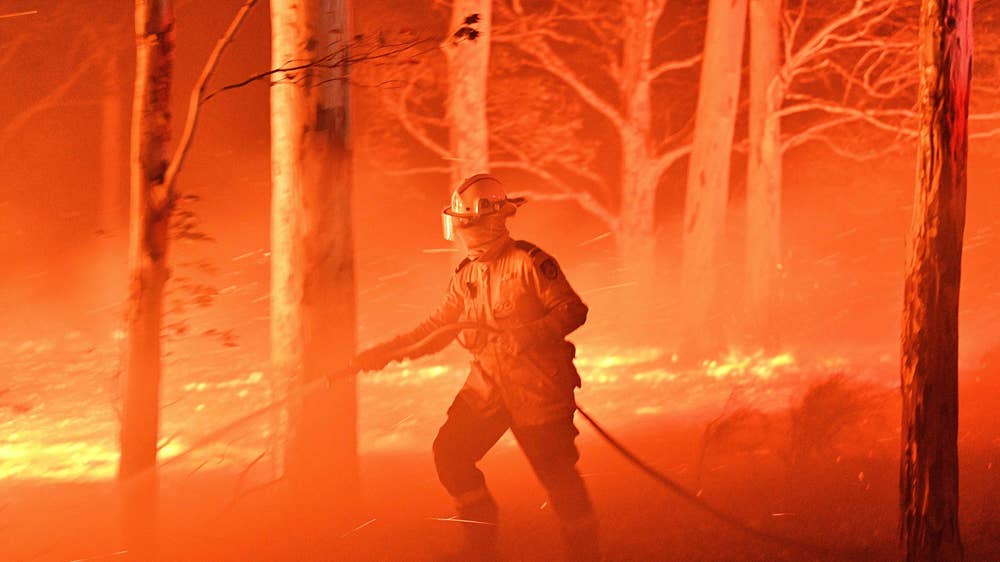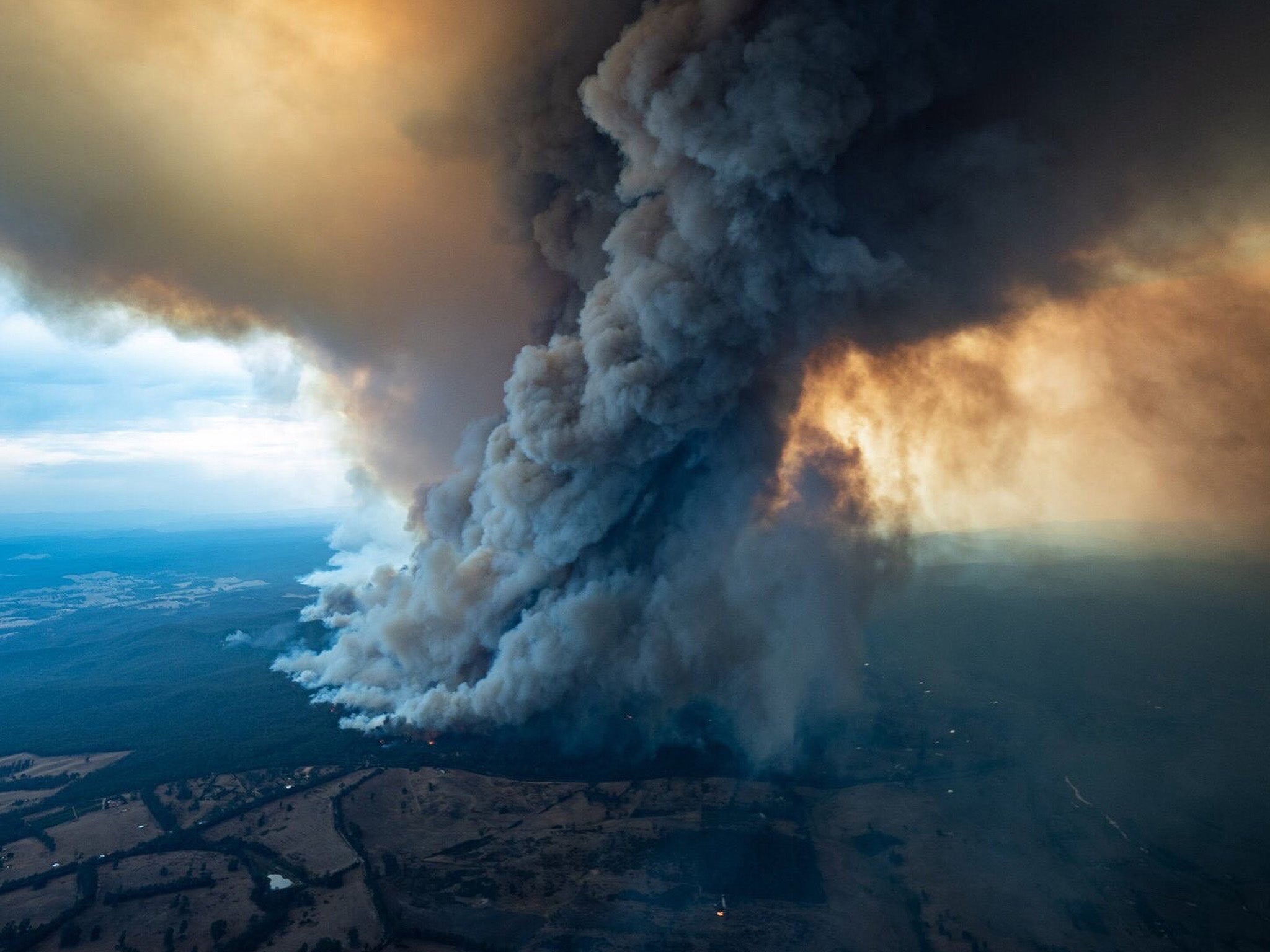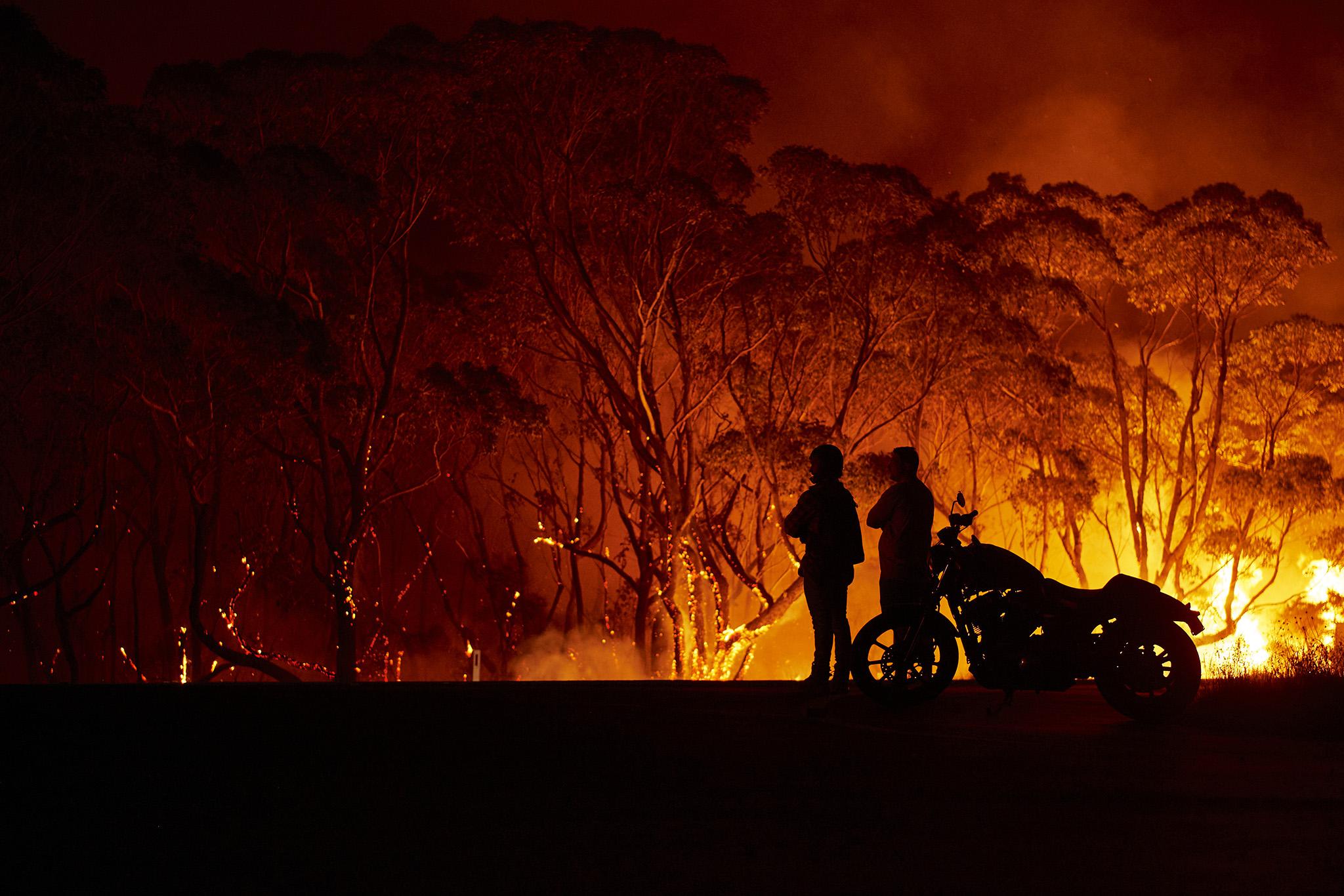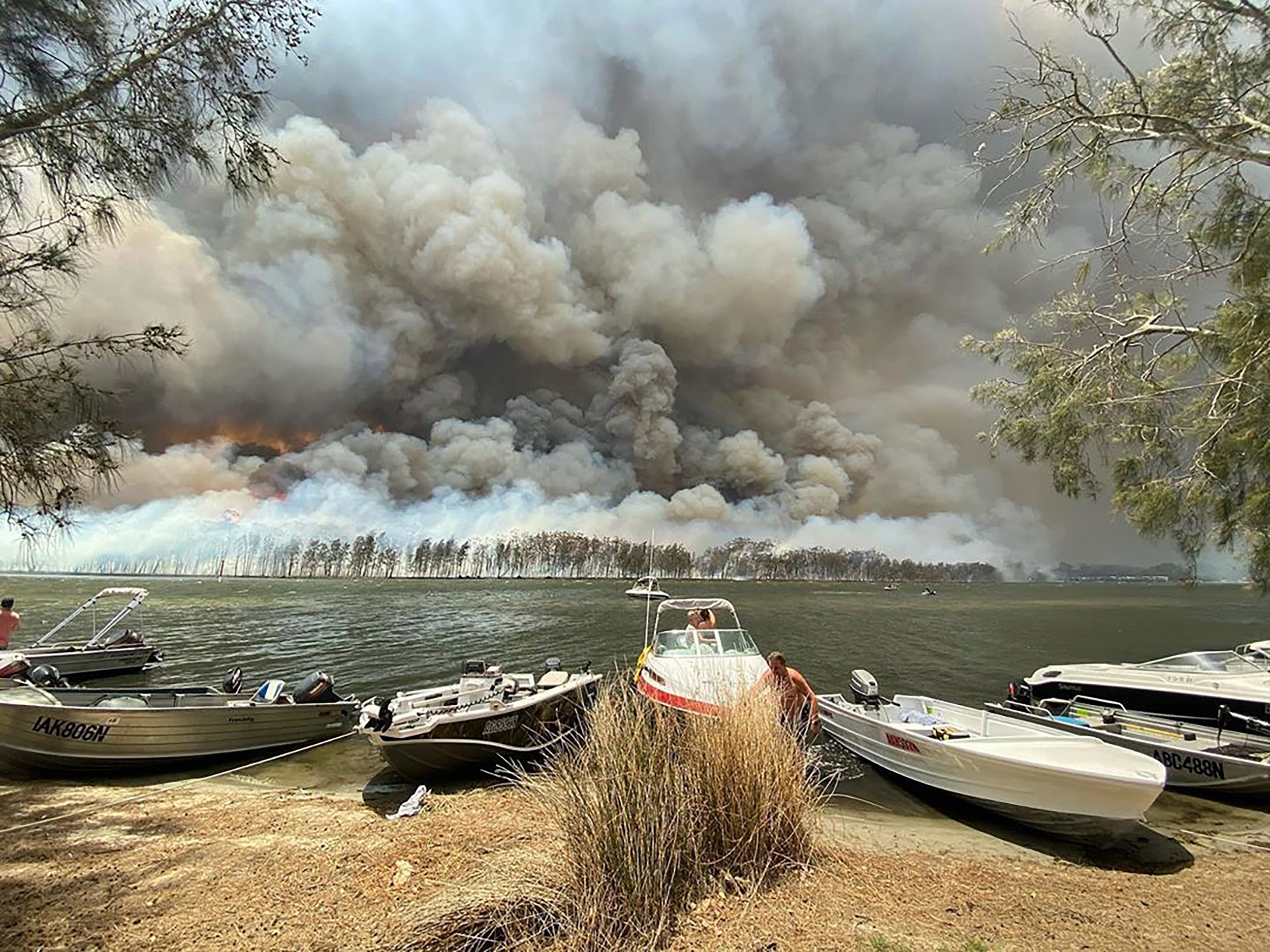
THE LONG READ FEATURE ARTICLE
CHINA IN CHARGE
From a poor agricultural nation to the second-largest economy in the world: the rapid rise of China is one of the most remarkable facts of this era, as Yohann Koshy finds out. But how did it happen? And what comes next?

A Ferrari – coloured a revolutionary red – prowled through downtown Toronto. The engine made a patriotic roar. In Vancouver, a black supercar sported the national flag of the People’s Republic on its hood. Aston Martins, McLarens and Porsches proceeded through the streets of both cities in an organized convoy. A Mercedes-Benz in a disabled parking space played the Chinese national anthem at full volume.
This protest, which took place in August, was a show of force from Canada’s Chinese expats. The cause? Supporting Beijing during Hong Kong’s pro-democracy street movement. The upper-class diaspora, many of whom moved to Canada as part of a now-shelved immigration programme to attract ‘immigrant investors’ in the 2000s, was demonstrating its commitment to the territorial integrity of ‘Greater China’: ‘Love China. Love Hong Kong. No Secession. No Riot/Violence’ adorned the placards outside the Chinese consulate in Vancouver.
The irony is that many of these wealthy expats settled in Canada to escape the Chinese government’s capital controls and park their money in lucrative property on the other side of the Pacific. But ironies and contradictions are everywhere you look in China at this moment in the early 21st century – or what one day might simply be called the Chinese century.
CHINA IN REVOLT
The violent clashes in Hong Kong between protesters, the police and pro-government goons provided some of the most arresting images of the year. In the Chinese-administered territory, the failure to make good on promises of universal suffrage or deal with economic inequality generated a potent and leaderless social movement: ‘7k for a house like a cell and you really think we out here scared of jail?’, went one spray-painted slogan. But the Hong Kong crisis is also just one of many social, political and economic fractures running through the People’s Republic as it settles into the role of world superpower.
There was what scholar Leta Hong Fincher calls the ‘feminist awakening’ of the mid-2010s, when five activists were arrested ahead of International Women’s Day for organizing against sexual harassment. Under the ‘hypermasculine personality cult’ of President Xi Jinping, Chinese feminists have been struggling against patriarchal attitudes in public and the workplace, as Fincher documents in her book Betraying Big Brother.
Then, in 2018, there was a clampdown on students from several elite universities who had been supporting striking workers. Over 50 were detained in August and, in December, the head of Peking University’s Marxist Society was arrested. A manifesto calling for a ‘new society’ truly ‘led by the working class’ – and denouncing the arrest of students whose only crime was being ‘loyal to Marxism’, the country’s official creed – was quickly scrubbed off the internet.
And, perhaps most significantly, this decade has seen a huge number of wildcat strikes. The China Labour Bulletin, a Hong Kong-based NGO, documents these unofficial disturbances. Scroll through its online map and the country turns red with dots: there were 1,750 strikes and workers’ protests last year, a figure which peaked at 2,700 in 2015. These can involve picket lines, work stoppages, street blockades and even violent confrontations with the police.
‘There are workers on strike every day in China,’ Han Dongfang, executive director of China Labour Bulletin, tells me. ‘They are being exploited because they don’t have the rights to organize a union or bargain [for higher wages]. This is about survival and fairness.’
RED AND GREEN
China’s jingoistic middle class and restive working class both owe their existence to their country’s gravity-defying embrace of turbo-capitalism. After the Communist Revolution in 1949, Mao Zedong set about creating a developmentalist state: nationalized industry in the cities, collectivized farmland in the countryside, with a basic degree of social rights through co-operative healthcare systems and the expansion of education among the peasantry.
The collapse of this model – following the largest famine in human history during the Great Leap Forward – was followed by market reforms. By the 1980s, Deng Xiaoping was able to exploit a ‘comparative advantage’, in economist-speak, unlike anything in the history of capitalism: a reserve army of several hundred million labourers, with decent health and literacy standards, under whose toil China would become the workshop of the world. The number of workers that Deng set loose on the world economy was equivalent to all of the workers in the Global North combined at the time. Around 160 million people moved from the countryside to the cities for work in factories – the largest internal migration in human history – assembling commodities that would be exported to the world market.
The ordinary people, farmers and workers, like Xi Jinping because they hate these [corrupt] officials, even if he’s done nothing really to improve daily life
Along with this state-managed liberalization of the economy came a dismantling of the benefits of the previous period. The so-called ‘iron rice bowl’ – the social contract that ensured a cradle-to-grave job for Chinese workers – was shattered by reforms in the state-owned enterprise sector. Healthcare was deregulated and vast amounts of land were effectively privatized. GDP grew and hundreds of millions were lifted out of absolute poverty, but inequality and precariousness skyrocketed. The dividends were distributed unfairly: in 1990, the average salary of an urban woman was 77.5 per cent that of a man. By 2010, it was 67.3 per cent. By 2013, communist China was among the most unequal countries in the world.
When I ask Han Dongfang, who grew up in a poor village in the Shanxi province, whether the average Chinese person is better off now or before the reform period, he tells me that it depends on the metric. ‘When I was a child 45 years ago, we would eat pork once a year during Chinese New Year, just to make sure we didn’t forget the flavour. I didn’t know fish existed until I was 10 years old,’ he says. ‘Now [Chinese people] can afford to be vegetarian! But there is a Chinese saying: it’s not a big deal if everyone is poor. But it is a big deal if there’s no equality. So people feel the unfairness. That is the problem.’
FAULT LINES
The 2008 financial crisis, triggered by a runaway financial sector in New York and London, signified a shift in the world’s centre of gravity from West to East. Beijing launched a massive economic stimulus programme worth $586 billion, ‘an intervention comparable in scale to anything ever undertaken in the Mao era or under Soviet communism’ according to historian Adam Tooze; this has been credited with ‘saving global capitalism’, by stimulating demand at a time when the rich world was in recession. Some 70 per cent of the stimulus went on infrastructure spending; between 2011 and 2013, China consumed more concrete than the United States did in the entire 20th century.
The creation of a physical, tangible new China – of high-speed rail and colossal, sea-spanning bridges – partly explains why Chinese people are among the most optimistic in the world, with 91 per cent saying their country is moving in the right direction, according to a 2019 IPSOS Mori poll of 28 major nations. (The figure is 21 per cent in the United Kingdom.) At the same time, the dog-eat-dog neoliberal ethic and perception of astronomic inequality makes China rank surprisingly low in international happiness rankings. Optimistically sad. Park it next to hammer-and-sickle-waving millionaires as another uniquely Chinese contradiction.
But the optimism may soon wear thin. The economist Walden Bello suspects that China might be the site of the next big financial crisis. The symptoms are ‘overheating in its real-estate sector, a rollercoaster stock market and a rapidly growing shadow banking sector’, whereby a large quantity of loans – estimates of shadow-banking trades range from $10 to $18 trillion per year – are made not by regulated banks but by state-owned enterprises and local governments. As China is increasingly integrated in the global economy, a sudden downturn in the Shanghai stock market is more likely to reverberate globally.
‘I suspect China’s growth will not be sustainable for many more years,’ Minqi Li, an economist who participated in the 1989 Tiananmen Square uprising and now teaches at the University of Utah, tells me. Li is less concerned with debt than with the fundamentals: ‘[China’s growth] has been based on the exploitation of cheap labour under sweatshop conditions as well as a very significant environmental cost. China is now the world’s largest greenhouse gas emitter [and] importer of both oil and natural gas.’ Reaching peak oil production or geopolitical instability in the countries where China gets its primary resources could chuck serious grit in the gears of the economy.
‘I also think that China’s working class will not be content with being cheap labour forever. And growing urban middle-class professionals will demand more political and social rights,’ Li adds.
WHAT XI WANTS
These dilemmas are not unknown to the Communist Party leadership. In fact, they form the basis of President Xi’s decisions. Since he came to power in 2013, Xi’s ambition has been a ‘great rejuvenation’ (the ‘Chinese Dream’) for his once proud nation, restoring it to the centre of world affairs after, the narrative goes, centuries of being marginalized by Western powers and Japan.
Part of this involves changing the economy from being a low-tech manufacturing hub to a high-value, high-tech society. But first Xi had to attend to the sense that ordinary folk were being shafted by pocket-stuffing elites. Hence his famous anti-corruption drive, which saw so many bribes and perks banished – such as lavish bottles of whisky and cognac from business people to government officials – that the European luxury sector actually experienced a downturn in China as a result.
‘The ordinary people, farmers and workers, like Xi Jinping because they hate these [corrupt] officials, even if he’s done nothing really to improve daily life,’ Dongfang says. Xi also wielded his anti-corruption drive as a weapon to clear the field of rivals, notably Bo Xilai, a popular (and corrupt) party chief whose model of more equitable municipal development was seen as a challenge to Xi’s vision of ruthless capitalism.
As for China’s capitalist class, Xi’s plan has been to smother them so tightly in the Communist Party’s embrace that they don’t get any rogue ideas, like pushing for their own forms of political representation. He has ‘dramatically strengthened’ the role the state plays in private firms, encouraging them to all have ‘chapters’ of the party in their corporate structures. While China remains a very decentralized country – there is lots of competition between powerful local governments – Xi has immensely consolidated his personal power: changes to the constitution and party reforms allowed him to get rid of presidential term limits and elevate his position above his comrades on the decision-making Politburo.

Since the 2008 economic crisis, China has invested heavily in infrastructure. The largest radio telescope in the world, for observing outer space, was completed in 2016 in southwest China. Liu Xui/Xinhua/Alamy
MADE IN CHINA 2.0
Last year, Jack Ma (net worth $35 billion) stepped down as CEO of online retail giant Alibaba and announced that he was a member of the Communist Party; the episode was understood as more evidence of Xi asserting the primacy of the party over the market. Ma’s company, along with Tencent and Baidu, are the three pioneers of China’s new high-tech future, which is the fastest-growing sector of the economy. They make their money harvesting the data of a billion people, providing services from social media to mobile e-payments. They are, effectively, three of the largest corporations on the planet.
Whereas the stereotype among Western commentators was once that Chinese capitalism is good at imitating others but not at coming up with original ideas, contemporary China is leading the world in terms of ‘innovation’. The popularity of the Chinese app TikTok – a kind of avant-garde, super-sophisticated Snapchat that allows users to make mini music videos – is one sign of this. Patent applications have increased from almost nothing in 2000 to 928,000 by 2014, dwarfing the number coming from the United States and Japan.8 Today, there are public bathrooms in Shanghai and Beijing that have built-in facial recognition systems: you need to scan your face before toilet paper is dispensed.
One function of this is purely repressive: the state’s ability to survey its citizens is unrivalled. But its long-term social consequences might be even more deleterious. China has been buying more industrial robots than any other country since 2013. In Dongguan, in China’s manufacturing belt, 60 to 85 per cent of workers at several small and medium-sized companies were fired after the introduction of state-subsidized robots: in one case study ‘after migrant workers (some of whom had been employed for decades) were made redundant, young university graduates with engineering bachelor degrees were hired to supervise the machines’.9 As a manager at a kitchen sink factory in Guangdong province told the Financial Times: ‘These machines are cheaper, more precise and more reliable than people.’ He had nine robots doing the jobs of 140 workers.
I ask Han Dongfang what he thinks: ‘Xi Jinping forgot: this is the country with 1.4 billion people. If you only need [a few] people to work with high technology, what about the rest? Will they vanish from the Earth by themselves?’ Even the so-called middle-class professional workers in the digital economy find themselves exploited in sweatshop-like conditions. At Huawei, the global success story of high-tech China, the targets are so intense that engineers and technicians sleep at their desks. They complain about the ‘996 regime’: working from 9am to 9pm, six days a week.

‘RIPPING US OFF’
Huawei isn’t just causing problems for its own employees. The reason you may only have heard of it relatively recently is because of the waves it has been causing geopolitically. Earlier this year, the UK government halted the telecommunications company from rolling out its 5G network, citing ‘security’ concerns, while the United States banned its own companies from selling Huawei components and technology.
Is Huawei really a ‘threat’? ‘When it installed servers in the African Union it was demonstrated that they were really vulnerable to being exploited,’ says Rui Zhong, from the Wilson Centre in Washington DC. ‘Huawei technicians [have also been accused of helping] Zambia and Uganda target political opponents.’ However, the US has been reluctant to provide specific details about the supposed threat Huawei poses to its allies, leading some to speculate that politics rather than ‘security’ is carrying the day.
‘Chy-na!’ was the catchphrase of Trump’s presidential campaign. It exposed a wound in US supremacy: ‘China’s upset because of the way Donald Trump is talking about trade with China,’ he said in 2016. ‘They’re ripping us off folks; it’s time. I’m so happy they’re upset.’ While Trump’s tone and comments have varied wildly since he assumed the Presidency (‘I don’t blame China,’ Trump said in 2018. ‘After all, who can blame a country for being able to take advantage of another country to the benefit of its citizens?’) he has made good on appearing to confront the world’s second-largest economy through an erratic trade war.
This comes after the years Washington has spent building up its military capacity in the Pacific; as John Pilger observed in ‘The coming war on China, more than 400 military bases bearing US firepower, including weapons of mass destruction, encircle China. In response, China has developed a more assertive foreign policy. Mao’s dictum was that China must ‘stand up’; Deng’s that China must ‘get rich’; Xi’s is that China must ‘become strong’.
As Chinese economic projects diffuse overseas, a ‘stronger’ foreign policy is inevitable. As China’s minister of foreign affairs said in 2016: ‘At present there are 30,000 Chinese businesses all over the world… and the stock of [our] overseas assets reached several trillion dollars. So it has become a pressing task for China’s diplomacy to better protect our growing overseas interests.’ During the 2011 Libyan civil war, China had its first taste of engaging with Middle Eastern politics like a Western power: after first professing ‘neutrality’ it eventually recognized the NATO-backed government, presumably because its priority was protecting the billions of dollars’ worth of economic interests it had in the country. In 2017, the People’s Liberation Army opened its first overseas military base in Djibouti, Africa.
HIT THE ROAD, XI
The United States still possesses the largest military capabilities by a long margin. So Xi’s assertiveness will be underwritten by economic might rather than his military arsenal. The centrepiece of this is the Belt and Road Initiative (BRI), a Chinese-financed infrastructure programme that spans over 60 countries, mainly in the Global South. Smarting from their experiences with the US-backed IMF, which often demands public-spending cuts in return for financial lifelines, many elites in developing countries have turned to China for money. A network of Chinese-financed railways, bridges, ports and power-stations stretches from Latin America to Central Asia.
The US, worried about losing influence, stokes fears about ‘debt-trap diplomacy’ behind the BRI – the thesis is that China is purposefully indebting poorer countries in order to render them client states. Meanwhile, soccer fans in Zambia watch matches in a 50,000-seat stadium paid for by China and half of Cambodia’s electricity is generated by Chinese-built hydroelectric dams. Whether Washington likes it or not, the world is increasingly ‘built by China’.
But Beijing is not acting selflessly. The BRI is a way of dealing with domestic problems, like over-capacity (producing too much stuff that China can’t consume itself), surplus capital (having too much infrastructure and money sloshing about), falling profits and a scarcity of raw materials. A global China, just like the US or imperial Britain before it, is simply pursuing its interests.
It is also a deeply political project. Becoming a major investor in smaller countries ensures loyalty to China. Take the situation in Xinjiang, northwestern China, where millions of Uyghurs – a Turkic-speaking ethnic minority – have been surveyed, detained and sent to re-education camps. When Pakistan’s prime minister Imran Khan was asked earlier this year by a journalist about the plight of his co-religionists in Xinjiang, he pretended to know little about it. It’s no coincidence that Pakistan is the ‘jewel in the crown’ of the BRI, having received more infrastructure investment than any other country.
The persecution of the Uyghurs has also revealed a lesser-emphasized aspect of modern China: the centring of ethno-nationalist politics. Xi has defined the ‘Chinese dream’ as ‘fulfilling the great renaissance of the Chinese race’. China is a multi-ethnic soceity, but the Han majority have come to stand in for the ‘real’ face of the nation. Those tides of virulent nationalism – from Ferrari-riding expats in Canada to ‘angry youth’ groups who share nationalistic memes on the internet – are nourished by this narrative which ‘identifies pernicious foreign influences’, including ‘internal foreigners’, as the cause of China’s downfall in previous centuries.
Perhaps the most chilling sign of what this newly assertive China will look like came from the editor-in-chief of the Global Times, a state-run tabloid. After 22 Western nations officially censured China for its treatment of the Uyghurs, he took to Twitter to gloat: ‘22 countries jointly criticized China’s governance in Xinjiang, but they only represent the face of the West. Why didn’t you unite the large number of developing countries to sign the open letter? Because you couldn’t. You are a small, isolated part of the world.’
THE DRAGON AWAKES
China’s rise to pre-eminence is unparalleled. Between 1990 and 2017, GDP per person grew by 903 per cent. The top four biggest banks in the world are already Chinese. As analyst Bruno Macaes puts it, ‘Suddenly every global story has a China angle, whether it is the growing instability in the Balkans, the coup in Zimbabwe or domestic politics in Australia.’ This is an epochal shift, and it’s not one that is going to be accepted easily by that ‘small, isolated part of the world’.
The shift towards a multipolar world, rather than the unipolar dynamic of the 1990s and 2000s, when the US was the only sheriff in town, should be seen as a positive. The challenges that organized life face in the 21st century require collaboration between state actors that can mobilize serious resources. For example, with the White House executive effectively run by climate deniers, a significant part of the outcome of humanity’s struggle against climate breakdown will be decided by bureaucrats in Beijing. The worry is not so much China’s rise then but, as China expert Martin Jacques puts it, the West’s inability to come to terms with its own relative decline.
But these grand pronouncements about tectonic shifts in international relations drown out what unaccountable, powerful states act like on the ground. In neighbouring Kazakhstan, life under Chinese hegemony is already here – as Serikzhan Bilash, a Chinese-born Kazakh, can attest. Bilash co-founded a human rights organization called Atajurt, which has been campaigning against the nightmarish repression in Xinjiang, in which Kazakhs as well as Uyghurs are targeted.
On the night of 9 March 2019, Bilash was violently arrested by what is presumed to be Kazakh state intelligence agents in the hotel where he was hiding and spirited away to the capital, Astana. After a punishing trial and campaign of harassment against his lawyer, Bilash eventually agreed to a plea bargain for charges of ‘inciting ethnic discord’. It is no secret that the state was doing the bidding of Beijing, which has invested billions in Kazakhstan. Stories of suffering and resistance like this must not get lost amid starry-eyed and breathless accounts of a new Chinese century.
---30---
(c) New Internationalist
A CANADIAN PUBLICATION OF & FOR THE WORLD SINCE 1973

of New Internationalist.
You can access the entire archive of over 500 issues



























 ‘I think in the West there is this misconception that the Communist Party still has some elements of communism in it. It does not.’ Avery Ng. Photo: Bennett Murray
‘I think in the West there is this misconception that the Communist Party still has some elements of communism in it. It does not.’ Avery Ng. Photo: Bennett Murray 


